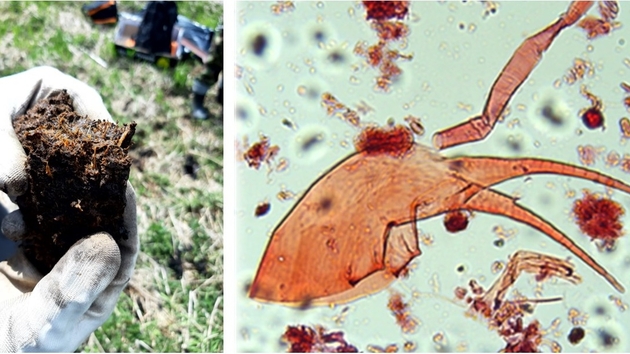Currently, one of the most debated research subjects in the earth sciences is contemporary climate change, and in order to understand it more accurately, palaeogeographical studies are necessary, as they make it possible to recognise and reconstruct changes in environmental conditions over past geological eras.
The research project: ,,Reconstruction of abrupt climatic changes at the turn of the Pleistocene and Holocene based on subfossil Cladocera remains (at selected sites in central Poland)" is carried out by UL doctoral student, Ms. Marta Rudna, within the framework of the 2nd edition of Doctoral Research Grants in 2023 at the Department of Geology and Geomorphology, Faculty of Geographical Sciences, under the supervision of Prof. Jacek Forysiak.
It is aimed at obtaining palaeoecological information on periods of abrupt climatic changes, i.e. cooling and warming at the Late Vistulian and Holocene transition. The research is conducted on the basis of two lacustrine-peat sediment cores, from which age-responsive fragments corresponding to periods of rapid environmental change (Oldest Dryas/Bölling, Bölling/Older Dryas, Older Dryas/Alleröd, Alleröd/Younger Dryas, Younger Dryas/Holocene transitions) have been selected. The basis of the study is the analysis of subfossil Cladocera remains performed at very high resolution. Sampling is planned every 1 cm, which will correspond to time slices of approximately 10 to 20 years. The precise temporal positioning of the examined core fragments is ensured by radiocarbon dating and palynological analysis, which will also provide additional opportunities to refine palaeoecological data on episodes of transition from cold to warm conditions and vice versa. The research is complemented by measurements of the sediments physicochemical parameters, such as: pH, conductivity, oxidation-reduction potential and calcium carbonate content. The studies will also contribute to broadening the state of knowledge on the conditions prevailing in the Polish Lowlands at the turn of the last glaciation period and the Holocene, and will allow to trace in detail the reaction of Cladocera to environmental changes within the palaeo-reservoir and its surroundings.

